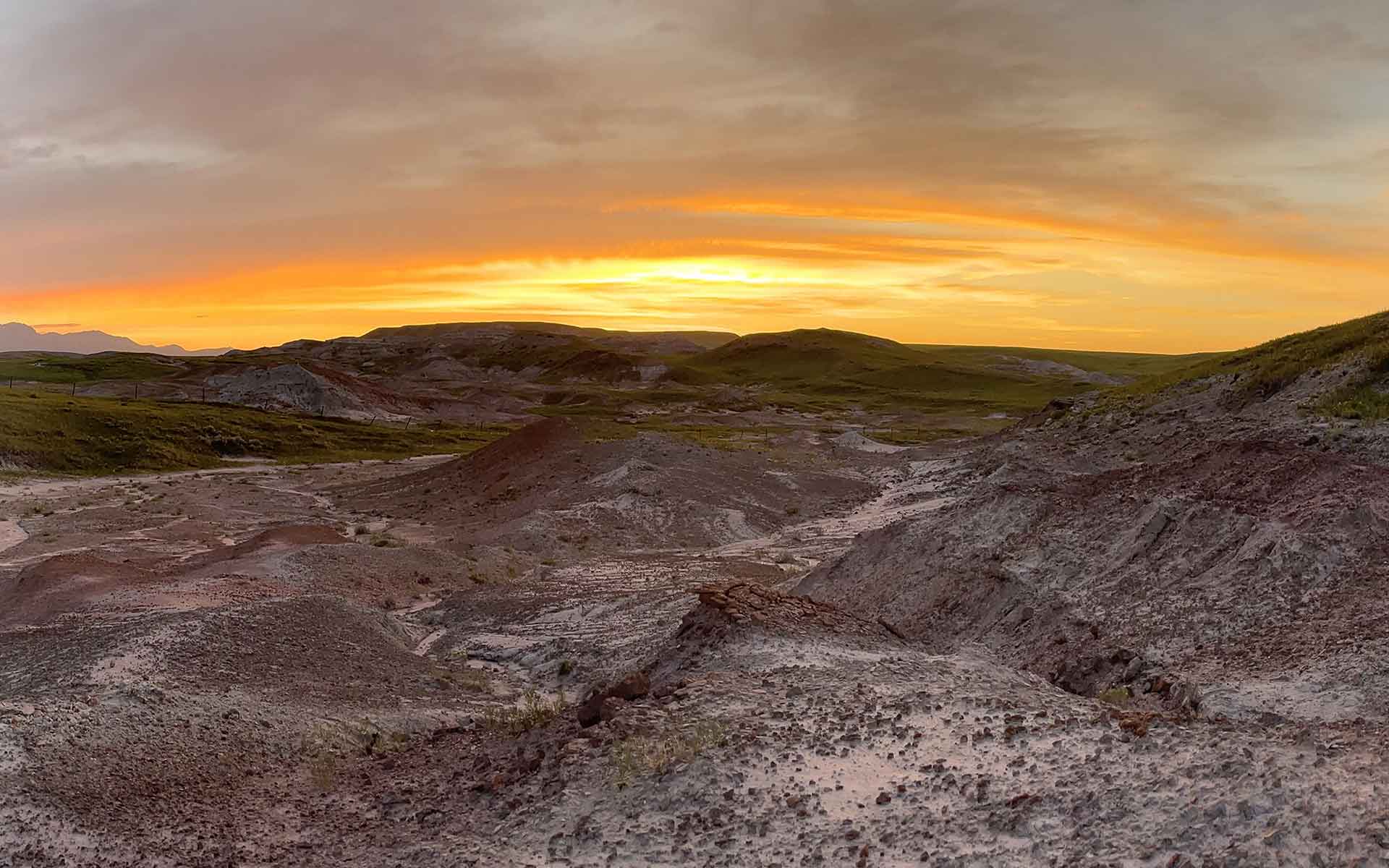The Cretaceous Dinosaur Nesting Grounds of the Willow Creek Anticline
United States of America

Maiasaura peeblesorum hatching. ‘Peeblesorum’ honors the Peebles family, on whose land the discovery was made. Reconstruction by J. Horner; exhibited at Museum of the Rockies.
Geological Period
Upper Cretaceous
Main geological interest
Paleontology
Location
Teton County, Montana, United States of America
47°49’08”N, 112°11’18”W
Maiasaura peeblesorum hatching. ‘Peeblesorum’ honors the Peebles family, on whose land the discovery was made. Reconstruction by J. Horner; exhibited at Museum of the Rockies.
The area that revealed the first evidence of colonial nesting and parental care in dinosaurs.
One of the most significant dinosaur localities, these exposures of the Two Medicine Formation produced the first dinosaur eggs and babies discovered in the western hemisphere. The fossils of the duck-billed dinosaur Maiasaura indicate these animals nested in groups and cared for their young, discoveries which helped shift the public and scientific perception of dinosaurs and their behavioral complexity. Histologic analyses of bones revealed insights into dinosaur growth and ecology, elevating histology as standard paleontologic practice. Based on its abundant fossils from the WCA, Maiasaura is now considered a model organism for dinosaur paleobiology studies (Woodward et al., 2015).
- Geological description
Exposures of the Upper Cretaceous Two Medicine Formation within the Willow Creek Anticline (WCA) consist of interbedded mudstones and sandstones representing an ancient floodplain. In 1978, Marion Brandvold found baby duck-billed dinosaur bones here. Investigation of the area by paleontologists John R. “Jack” Horner and Robert “Bob” Makela led to the discovery of the first dinosaur nests with associated eggs and babies in the western hemisphere (Horner and Makela, 1979). The close proximity of nests indicated these dinosaurs nested in groups. Examination of the fossils suggested this dinosaur cared for its young after they hatched and inspired its name: Maiasaura (the “good mother reptile”). Thousands of larger bones of Maiasaura were preserved nearby in an extensive bone bed and have been the subject of robust taphonomic and histologic studies. Nearby sites, including “Egg Mountain”, preserve egg clutches of the theropod dinosaur Troodon and the first in ovo dinosaur embryos (Horner and Weishampel, 1988). The WCA preserves not only fossil bones, but also trace fossils from a variety of Cretaceous animals. Nesting structures, footprints, coprolites, gastric pellets, insect pupae, burrows, and more have been discovered here, providing an unparalleled window into this ancient ecosystem (e.g. Varricchio et al., 1997; Chin, 2007).
- Scientific research and tradition
Several dinosaur, mammal, and lizard species are named based on fossils from the WCA. Today, many of these localities are part of Museum of the Rockies’ Beatrice R. Taylor Paleontology Research Area, a site of ongoing research.
- Reference
Chin, K. (2007) ‘The paleobiological implications of herbivorous dinosaur coprolites from the Upper Cretaceous Two Medicine formation of Montana: Why eat wood?’, PALAIOS, 22(5), pp. 554–566. Available at: https://doi.org/10.2110/palo.2006.p06-087r.
Horner, J.R. and Makela, R. (1979) ‘Nest of juveniles provides evidence of family structure among dinosaurs’, Nature, 282(5736), pp. 296–298. Available at: https://doi.org/10.1038/282296a0.
Horner, J.R. and Weishampel, D.B. (1988) ‘A comparative embryological study of two ornithischian dinosaurs’, Nature, 332(6161), pp. 256–257. Available at: https://doi.org/10.1038/332256a0.
Varricchio, D.J. et al. (1997) ‘Nest and egg clutches of the dinosaur Troodon formosus and the evolution of avian reproductive traits’, Nature, 385, pp. 247–250. Available at: https://doi.org/10.1038/385247a0.
Weaver, L.N. et al. (2021) ‘Early mammalian social behaviour revealed by multituberculates from a dinosaur nesting site’, Nature Ecology & Evolution, 5(1), pp. 32–37. Available at: https://doi.org/10.1038/s41559-020-01325-8.
Woodward, H.N. et al. (2015) ‘Maiasaura, a model organism for extinct vertebrate population biology: A large sample statistical assessment of growth dynamics and survivorship’, Paleobiology, 41(4), pp. 503–527. Available at: https://doi.org/10.1017/pab.2015.19.
- Author(s)
John B. Scannella.
Museum of the Rockies and Department of Earth Sciences, Montana State University. USA.
David J. Varricchio.
Department of Earth Sciences, Montana State University. USA.
Lee E. Hall.
Museum of the Rockies, Montana State University. USA.
Scott A. Williams.
Museum of the Rockies, Montana State University. USA.
Holly N. Woodward.
Department of Anatomy and Cell Biology, Oklahoma State University Center for Health Sciences. USA.


